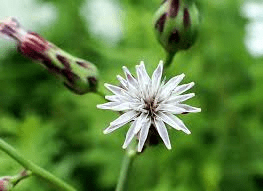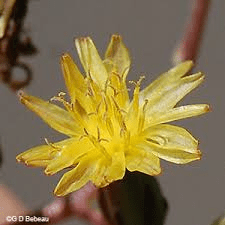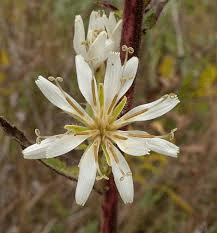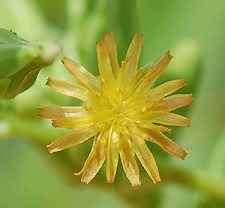Lettuce stamens are crucial components of the flower’s reproductive structure, playing a key role in the pollination process. Stamens are the male reproductive organs of the flower and are responsible for producing and dispersing pollen, which is essential for fertilization and seed production.
In lettuce, which is part of the Asteraceae family, each flower head consists of numerous small individual flowers or florets. The stamens are found within these florets and are typically arranged in a radial pattern around the central part of the flower. Each stamen consists of two main parts: the filament and the anther.
The filament is a slender stalk that supports the anther. It is attached to the base of the floret and elevates the anther to a position where it can effectively release pollen. The filament’s length and strength can vary, influencing how readily the pollen is accessible to pollinators or how effectively it can be dispersed by other means.
The anther is the part of the stamen that produces pollen. It is typically divided into two lobes, each containing pollen sacs where pollen grains develop. Pollen grains are microscopic structures that contain the male gametes or sperm cells necessary for fertilization. When the anther is mature, it releases pollen, which can be transferred to the stigma of the same or another flower, leading to fertilization.
In lettuce, self-pollination is a common occurrence, meaning that pollen from the stamens can fertilize the ovules within the same flower or within the same flower head. However, cross-pollination can also happen, especially if pollinators are present. This process helps increase genetic diversity and can improve the adaptability of the plant population.
The development and function of lettuce stamens are influenced by various factors, including genetic and environmental conditions. For example, temperature, light, and nutrient availability can affect the production and release of pollen. Lettuce is a cool-season crop, and extreme temperatures can impact flowering and pollen viability. Managing these factors is crucial for optimizing seed production and ensuring successful reproduction.
In agricultural practices, understanding the role of lettuce stamens can be important for improving crop yields and quality. For instance, ensuring that plants are in optimal conditions for flowering and pollen production can enhance seed development. Additionally, knowledge of stamen development and pollen production can inform breeding programs aimed at developing new lettuce varieties with desirable traits, such as improved disease resistance or higher yields.
Lettuce stamens are vital for the reproductive success of the plant. Their role in pollen production and transfer is essential for fertilization and seed development. By understanding their function and managing the factors that influence their development, growers can enhance lettuce production and contribute to the development of high-quality crops.
The Economic Importance and Uses of Lettuce Stamens

1. Pollination Support: Lettuce stamens are essential for pollination as they produce pollen, which is crucial for the fertilization of lettuce flowers and other plants.
2. Seed Production: Stamens contribute to the production of lettuce seeds, which are a primary economic product in agriculture and horticulture.
3. Herbal Medicine: In traditional medicine, lettuce stamens have been used for their potential mild diuretic and anti-inflammatory properties.
4. Natural Dyes: The pigments from lettuce stamens can be used to create natural dyes for textiles and crafts, offering an eco-friendly alternative to synthetic dyes.
5. Educational Purposes: Lettuce stamens are used in botanical studies to teach about plant reproductive systems and the role of male plant parts.
6. Composting: Lettuce stamens can be composted to add organic matter to the soil, contributing to soil health and fertility.
7. Animal Feed: When finely chopped, lettuce stamens can be included in animal feed, providing additional nutrients for livestock and poultry.
8. Decorative Uses: Dried lettuce stamens can be used in floral arrangements and crafts, adding texture and visual interest.
9. Eco-Friendly Packaging: Processed lettuce stamens can be used in the production of biodegradable packaging materials, reducing reliance on plastic.
10. Soil Health: Lettuce stamens can be used as mulch or compost, improving soil structure and moisture retention in garden beds.
11. Biodiversity Support: By growing and utilizing lettuce stamens, gardeners and farmers support plant diversity, which benefits local ecosystems and wildlife.
12. Skincare Products: Extracts from lettuce stamens may be used in skincare products for their potential soothing and anti-inflammatory effects.
13. Natural Pest Control: Lettuce stamens can be used in integrated pest management to help deter pests in gardens and agricultural settings.
14. Traditional Crafts: In some cultures, lettuce stamens are used in traditional crafts and ceremonial activities, reflecting their cultural significance.
15. Plant-Based Fiber: The fibers from lettuce stamens can be used to create sustainable products and composites, contributing to eco-friendly manufacturing.
16. Herbal Infusions: Lettuce stamens can be used in herbal infusions to offer mild health benefits and a unique flavor.
17. Homemade Teas: Dried lettuce stamens can be brewed into herbal teas, providing a calming beverage with potential health benefits.
18. Educational Crafts: Lettuce stamens are used in educational craft projects to illustrate plant anatomy and reproductive functions.
Read Also: Lynx Point Siamese Cat Breed Description and Care Guide
The Products and By-products That Can Be Derived From Lettuce Stamens

1. Lettuce Seeds: Stamens are crucial for the production of lettuce seeds, which are essential for growing new lettuce plants.
2. Natural Dyes: Pigments extracted from lettuce stamens can be used to dye textiles and crafts, offering an environmentally friendly option.
3. Herbal Teas: Dried lettuce stamens can be brewed to make herbal teas, providing a unique flavor and potential health benefits.
4. Compost: Lettuce stamens can be composted to enrich soil with organic matter, improving garden soil quality.
5. Animal Feed: Finely chopped lettuce stamens can be added to animal feed, offering additional nutrition for livestock.
6. Biodegradable Packaging: Processed lettuce stamens can be used in the production of biodegradable packaging materials, helping to reduce plastic waste.
7. Skincare Products: Extracts from lettuce stamens are used in skincare formulations for their potential soothing and anti-inflammatory properties.
8. Decorative Items: Dried lettuce stamens can be used in floral arrangements and craft projects, adding texture and visual appeal.
9. Mulch: Lettuce stamens can be used as mulch to help control soil erosion and retain moisture in garden beds.
10. Educational Materials: Lettuce stamens are used in educational settings to teach about plant reproduction and the roles of different plant parts.
11. Herbal Infusions: Infused with water, lettuce stamens create herbal infusions that offer a mild flavor and potential health benefits.
12. Plant-Based Composites: The fibers from lettuce stamens can be used to create plant-based materials and composites for sustainable product development.
13. Traditional Crafts: Lettuce stamens are used in traditional crafts and ceremonies, reflecting their cultural significance.
14. Natural Pest Repellent: Lettuce stamens can be used in gardens as a natural pest repellent, contributing to integrated pest management.
15. Soil Amendment: Used as a soil amendment or compost ingredient, lettuce stamens enhance soil health and fertility.
16. Educational Crafts: Lettuce stamens are incorporated into educational crafts to demonstrate plant anatomy and reproductive systems.
17. Eco-Friendly Gardening: Lettuce stamens support sustainable gardening practices by contributing to soil health and pest management.
Read Also: Abyssinian Cat (Felis catus) Description and Complete Care Guide
Frequently Asked Questions (FAQ’s) About Lettuce Stamens

1. What are lettuce stamens?
Lettuce stamens are the male reproductive parts of the lettuce flower. They produce pollen, which is essential for fertilization and seed production.
2. How do lettuce stamens contribute to seed production?
Lettuce stamens produce pollen, which fertilizes the female parts of the flower, leading to the production of lettuce seeds. These seeds are crucial for growing new lettuce plants.
3. Can lettuce stamens be used in herbal medicine?
Yes, in traditional herbal medicine, lettuce stamens are sometimes used for their potential mild diuretic and anti-inflammatory properties.
4. How can lettuce stamens be used in natural dyes?
Pigments from lettuce stamens can be extracted and used to create natural dyes for textiles and crafts, providing an eco-friendly alternative to synthetic dyes.
5. Are lettuce stamens beneficial for soil health?
Yes, when composted or used as mulch, lettuce stamens add organic matter to the soil, improving its structure and moisture retention.
6. Can lettuce stamens be used in animal feed?
Yes, finely chopped lettuce stamens can be included in animal feed, providing additional nutrients for livestock and poultry.
7. How are lettuce stamens used in decorative projects?
Dried lettuce stamens are used in floral arrangements and crafts to add texture and visual interest.
8. What are the educational uses of lettuce stamens?
Lettuce stamens are used in botanical studies to teach about plant reproductive systems and the role of different plant parts.
9. Can lettuce stamens be used in skincare products?
Yes, extracts from lettuce stamens may be used in skincare products for their potential soothing and anti-inflammatory effects.
10. How can lettuce stamens help in pest control?
Lettuce stamens can be used in gardens as part of integrated pest management strategies to help deter pests and support sustainable gardening practices.
Read Also: How to Graft an Avocado Tree to Produce Avocado Fruit






